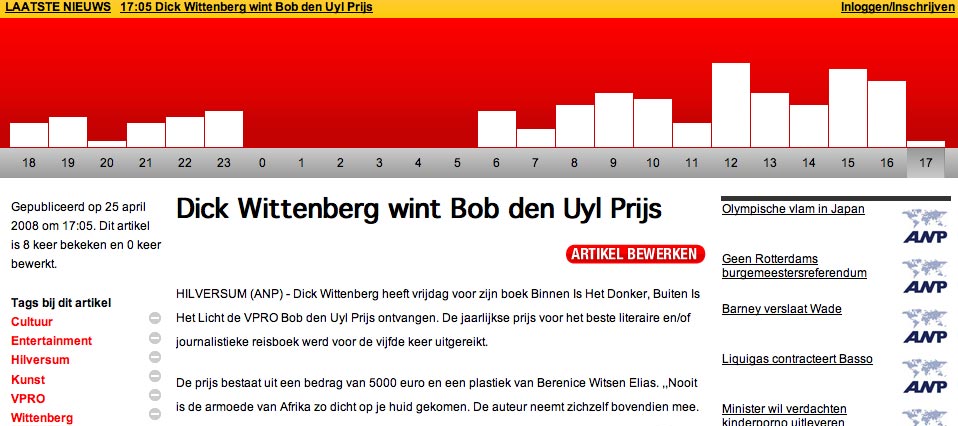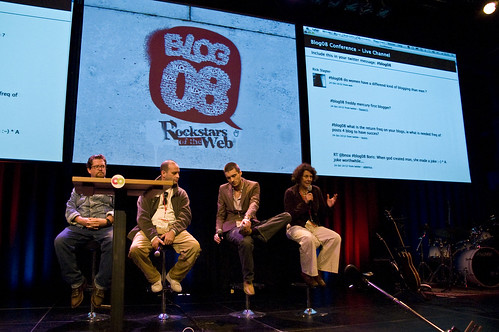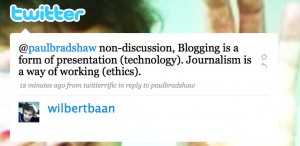Wilbert Baan, interaction designer for de Volkskrant, is part of the team behind EN.nl – a bold project to redesign the news site. The site makes the most of its users in reshaping its design and includes a healthy dose of technological innovation alongside this wiki attitude.
Baan says the team built a version of the site for the iPhone within an hour and making the site work across different devices is key to how it’s been built.
After an initial introduction to the site through Paul Bradshaw’s blog, Journalism.co.uk asked Baan for more insight into the project:
1) What is the thinking behind the design EN.nl? How will its features improve the delivery of news to readers?
EN asks readers to participate. The design wants to stimulate participation. The horizontal timeline (below) shows the rhythm of news, the published articles over the last 24 hours.

When there is breaking news this often results in large amounts of small articles. This will make the bars of the hours that the news breaks relatively high compared to the rest of the day.
EN.nl is an evolving project. The design is an experiment and we had positive and negative feedback on the horizontal timeline. Positive is that it enables you to scan over a hundred articles relatively fast. The negative aspect is that it doesn’t show hierarchy. Everything is time-based.
On a NING network we ask everyone to share ideas and thoughts. We are open about the development process and made this a public experience.
2) How do you decide what content makes it onto the site?
EN is linked to a feed from a Dutch Press agency (ANP). This makes the website – for now – a closed system with a focus on news. ANP produces around a hundred articles a day and covers the whole spectrum of news reporting in the Netherlands.
There are already people asking to write articles. For example one reader is already bending the system and creating interesting articles. He takes an article and uses this as a container for ‘more important’ news.
There are some things you have to think about when opening the system for everyone to write articles. Relevancy and the truth become more important. We trust press agencies. How do you build online trust or what is important in developing a reputation system? And how do you decide what article is relevant and for whom?. Should we syndicate more news sources and should we syndicate with bloggers?
I think EN will develop to something where everyone can write and submit articles and I think it will be closely linked to a relevancy system. If you are a soccer fan your definition of soccer related news is different than that of a non-soccer fan.
3) On Paul Bradshaw’s blog you said: ‘The database is the most valuable asset of a news organisation’ – can you explain why you think this?
The web is fragmenting or – maybe even better – the web is everywhere: on your mobile phone, television, widgets, feeds, website and more. Making information portable is important for a news organization, because you probably can’t develop something for every niche platform or website.
Making collections and connecting data creates new value. If your information is easily accessible and contains valuable meta information then this gives additional tools to a news organization and enables them to move fast or enable their readers to create the tools they desire.
If your news (articles, photos, audio, video) is stored with good meta information and accessible it makes it easy to work with third parties in developing new value like location based services or news linked to your profile on another website. And even more important it will be cheaper to develop since you don’t have to update your archive with meta information.
I don’t know exactly what device or service will be popular in five years, but I guess the article as a container will still be popular.


